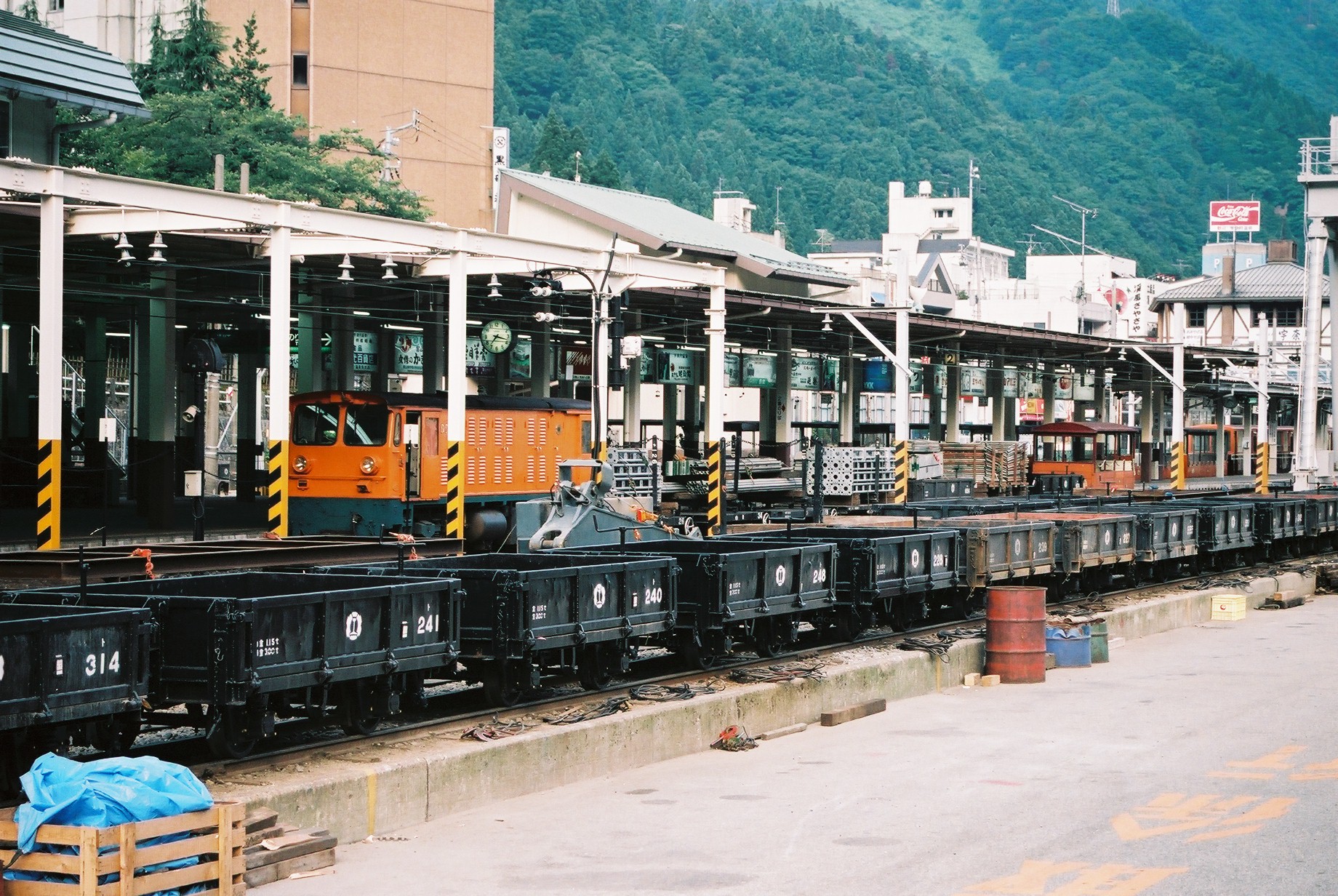Kurobe Gorge Railway on:
[Wikipedia]
[Google]
[Amazon]
The , or for short, is a private,
▲: Served by passenger trains only during April–May
|: Closed to passengers

 * class (
* class (
narrow gauge
A narrow-gauge railway (narrow-gauge railroad in the US) is a railway with a track gauge narrower than standard . Most narrow-gauge railways are between and .
Since narrow-gauge railways are usually built with tighter curves, smaller structu ...
railway company operating the Kurobe Gorge Main Line along the Kurobe River
The is a river in Toyama Prefecture, Japan. in length, it has a watershed of 689 km².
The river rises from Mount Washiba in the Hida Mountains and carves the deep valley known as the Kurobe Gorge. It comes out of the mountains at Un ...
in the Kurobe gorge area of Toyama Prefecture
is a prefecture of Japan located in the Chūbu region of Honshu. Toyama Prefecture has a population of 1,044,588 (1 June 2019) and has a geographic area of 4,247.61 km2 (1,640.01 sq mi). Toyama Prefecture borders Ishikawa Prefecture to the ...
, Japan. The railway was built to serve the construction of the Kurobe dam
The or , is a high variable-radius arch dam on the Kurobe River in Toyama Prefecture, Japan. The tallest dam in Japan, it supports the 335 MW Kurobe No. 4 Hydropower Plant and is owned by Kansai Electric Power Company. It was constructed betwe ...
for the Kansai Electric Power Company
, also known as , is an electric utility with its operational area of Kansai region, Japan (including the Keihanshin megalopolis).
The Kansai region is Japan's second-largest industrial area, and in normal times, its most nuclear-reliant. B ...
, which was completed in 1963; Kurotetsu was spun off from the power company in June 1971, but remains a wholly owned subsidiary. At its terminus, the Main Line links to Kurobe Senyō Railway, which is not open to general public.
In 2008 the company operated 27 locomotives, 138 passenger carriages and 322 freight wagons.
History
The Unazuki - Nekomata section opened in 1926, electrified at 600 VDC and was extended to Keyakidaira in 1937. The passenger service started in 1953.Stations
All stations are inKurobe, Toyama
is a city in Toyama Prefecture, in the Chūbu region of Japan. , the city had an estimated population of 41,564 in 15,387 households and a population density of 95.8 persons per km². Its total area was .
Geography
Kurobe is located in northeas ...
.
;Key
●: Served by passenger trains▲: Served by passenger trains only during April–May
|: Closed to passengers
Equipment

Electric locomotives
* EB class (Nos. 1–3, 5–7): withdrawn from service in 1984. * ED class (Nos. 8–11): 9–11 survive. * EDS class (Nos. 13, 15–17): No. 13 survives. * EDM class (Nos. 22, 23, 30–32) * EDR class (Nos. 17–21, 24–29, 33) * EHR class (Nos. 101, 102)Battery electric locomotives
* BB class (Nos. 1, 2)Diesel locomotives
* DB class (No. 11): withdrawn 1985 * DD21: withdrawn 1979 * DD22, DD23: DD23 withdrawn 2000 * DD24Passenger cars
* class: 2-axle open car. * 1000 class: open car * 2000 class: heated car with fixed, widthwise seats, extra charge to ride * 2500 class: heated car with reversible seats so that passengers can always ride facing forward, extra charge to ride * 2800 class: lounge car, heated, reversible seats, extra charge to ride * 3000 class: panoramic observation car, extra charge to ride The cars are manufactured by Alna Koki. The 2000 class cars have drivers cabs at their front end.Freight cars
 * class (
* class (boxcar
A boxcar is the North American (AAR) term for a railroad car that is enclosed and generally used to carry freight. The boxcar, while not the simplest freight car design, is considered one of the most versatile since it can carry most ...
)
* class depressed center flatcar
A flatcar (US) (also flat car, or flatbed) is a piece of rolling stock that consists of an open, flat deck mounted on a pair of trucks (US) or bogies (UK), one at each end containing four or six wheels. Occasionally, flat cars designed to carry ...
* class flatcar
* class flatcar
* class flatcar
* class gondola
The gondola (, ; vec, góndoła ) is a traditional, flat-bottomed Venetian rowing boat, well suited to the conditions of the Venetian lagoon. It is typically propelled by a gondolier, who uses a rowing oar, which is not fastened to the hull, ...
* class gondola
* class flatcar
* class depressed center flatcar
See also
*List of railway lines in Japan
List of railway lines in Japan lists existing railway lines in Japan alphabetically.
The vast majority of Japanese railways are classified under two Japanese laws, one for and another for . The difference between the two is a legal, and not alway ...
References
This article incorporates material from the corresponding article in the Japanese WikipediaExternal links
* {{Official website, http://www.kurotetu.co.jp Railway companies established in 1971 Railway companies of Japan Companies based in Toyama Prefecture 2 ft 6 in gauge railways in Japan Japanese companies established in 1971 Kurobe, Toyama